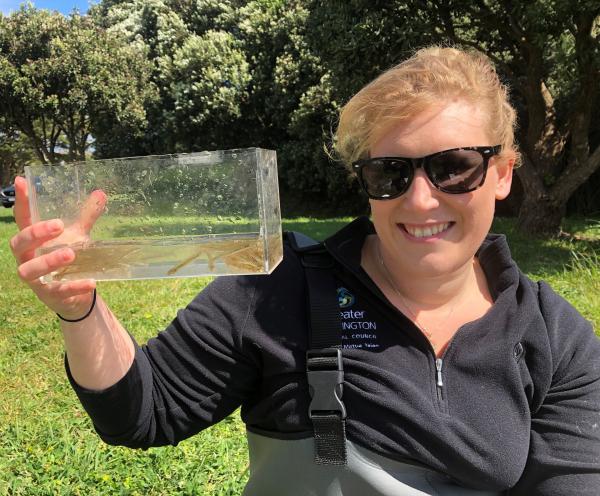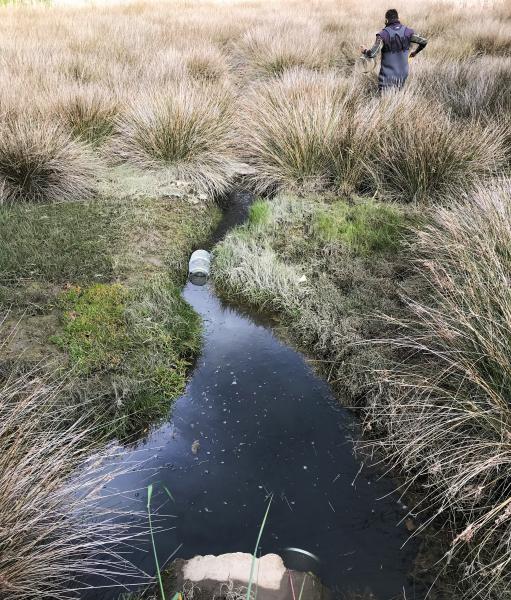Urban wetland in Porirua reveals healthy fish life
 |
 |
Greater Wellington Regional Council staff have been fishing day and night around Porirua harbour's Papakowhai wetland recently - but not for sport or recreation, and not where you'd expect.
The Environmental Science team is trapping and spotting fish and invertebrates to see what is living in our local wetlands as part of a broader investigation into the biodiversity values within wetlands. So far the results have been encouraging.
"We were pleased to discover a variety of species living in this urban area, and in quite high numbers," says Environmental Monitoring Officer Ashley Mitchell. "It's great to see in areas more usually defined by concrete and tarmac."
Papakowhai wetland is a coastal wetland or salt marsh located on the side of the road near the Porirua off-ramp, not the kind of place youd associate with biodiversity.
"Urban areas often have additional pressures compared with bush-covered areas, such as stormwater pollution, which makes them more vulnerable to poor water quality and biodiversity loss," says Ms Mitchell.
"However, in the Papakowhai wetland we saw a good variety of freshwater fish species in the streams which flow into the wetlands, which are also tidally influenced. We saw whitebait throughout the area and their adult forms, inanga and banded kokopu. These fish move through wetlands and estuaries at various stages of their life.
"Interestingly, there were a lot of freshwater fish at the culvert inlets in the wetland complex, even in the really salty water."
The fish life in the wetlands is monitored using a variety of traps, as well as by spotlighting with a torch at night.
Less than three percent of the Greater Wellington region's original wetland remains. However, wetlands are an important resource. Keeping them healthy is critical for maintaining clean water and supporting wildlife and fish populations.
"Wetlands are able to filter out nutrients, slow floodwaters and store carbon, among other invaluable qualities," says Dr Philippa Crisp, Team Leader, Environmental Science. "They are also threatened ecosystems and home to rare and unique biodiversity."
The Council has been running a wetland health monitoring programme for the past three years. It monitors 30 wetlands per year. Staff will return to each site every five years to see what's changed. This year staff have been working in the Porirua and Hutt/Wellington areas.
"This programme will help us understand whether the steps we are taking to protect the region's wetlands are making a difference," says Dr Crisp.
In Greater Wellington's proposed Natural Resources Plan, which will be finalised in 2019, there are specific provisions for the protection and management of all wetlands in the region. This includes excluding livestock access; avoiding the discharge of contaminants such as oil or paint; and not undertaking any reclamation activities such as drainage or diverting of water.
"Members of the public can help by not washing their cars on the street, using non-toxic products, by not throwing rubbish in the water and by not disturbing the native plants growing around these areas" says Ms Mitchell.
"Protecting our wetlands is important work and together we can make a difference."
Get in touch
- Phone:
- 0800 496 734
- Email:
- info@gw.govt.nz
